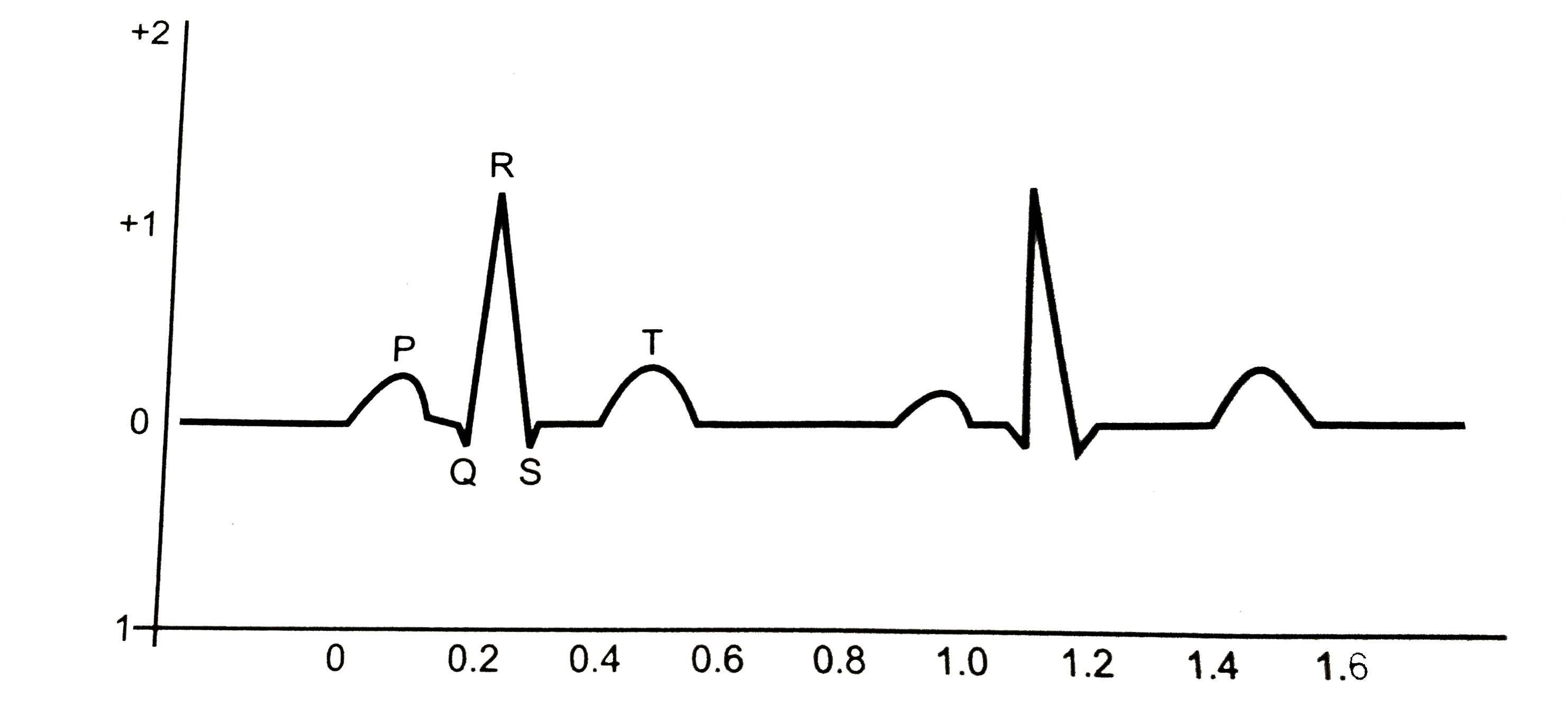In ECG of a normal person, T-wave represents ventricular relaxation and ventricular repolarisation
Step-by-Step Solution:
1. Understanding the ECG Waves:
- The electrocardiogram (ECG) is a graphical representation of the electrical activity of the heart during the cardiac cycle. It consists of several waves, including the P wave, QRS complex, and T wave.
2. Identifying the T Wave:
- The T wave is the part of the ECG that follows the QRS complex. It is crucial to understand what the T wave represents in the cardiac cycle.
3. Function of the T Wave:
- The T wave represents two key processes in the heart:
- Ventricular Repolarization: This is the process where the ventricles recover from the depolarization that occurred during the contraction (systole).
- Ventricular Relaxation: After the ventricles have contracted and pumped blood out of the heart, they need to relax to fill with blood again. The T wave indicates that this relaxation phase is occurring.
4. Conclusion:
- Therefore, in a normal ECG, the T wave signifies both the relaxation of the ventricles and the repolarization of the ventricular muscle cells.
Final Answer:
In the ECG of a normal person, the T-wave represents both ventricular relaxation and ventricular repolarization.
---
- The electrocardiogram (ECG) is a graphical representation of the electrical activity of the heart during the cardiac cycle. It consists of several waves, including the P wave, QRS complex, and T wave.
- The T wave is the part of the ECG that follows the QRS complex. It is crucial to understand what the T wave represents in the cardiac cycle.
- The T wave represents two key processes in the heart:
- Ventricular Repolarization: This is the process where the ventricles recover from the depolarization that occurred during the contraction (systole).
- Ventricular Relaxation: After the ventricles have contracted and pumped blood out of the heart, they need to relax to fill with blood again. The T wave indicates that this relaxation phase is occurring.
- Therefore, in a normal ECG, the T wave signifies both the relaxation of the ventricles and the repolarization of the ventricular muscle cells.
In the ECG of a normal person, the T-wave represents both ventricular relaxation and ventricular repolarization.
Topper's Solved these Questions
- BODY FLUIDS AND CIRCULATION BOOK - MODERN PUBLICATIONCHAPTER - BODY FLUIDS AND CIRCULATION EXERCISE - QUICK MEMORY (Complete the missing links)
17 Videos
- BODY FLUIDS AND CIRCULATION BOOK - MODERN PUBLICATIONCHAPTER - BODY FLUIDS AND CIRCULATION EXERCISE - QUICK MEMORY (Choose the correct alternative)
12 Videos
- BODY FLUIDS AND CIRCULATION BOOK - MODERN PUBLICATIONCHAPTER - BODY FLUIDS AND CIRCULATION EXERCISE - HIGHER ORDER THINKING SKILLS & BRAIN TWISTING (Long Answer Questions)
2 Videos
- BIOMOLECULES BOOK - MODERN PUBLICATIONCHAPTER - BIOMOLECULES EXERCISE - CASE BASED SHORT ANSWER TYPE QUESTIONS
1 Video
- BREATHING AND EXCHANGE OF GASESBOOK - MODERN PUBLICATIONCHAPTER - BREATHING AND EXCHANGE OF GASESEXERCISE - CHAPTER PRACTICE TEST
14 Videos
Similar Questions
Knowledge Check
In the standard ECG of a normal person, the P-wave represents the
Aatrial depolarisationBventricular depolarisationCatrial repolarisationDventricular repolarisationIn ECG, what does T wave represent?
ADiastole of atriaBSystole of ventriclesCSystole of ventriclesDRepolarisation of ventriclesWhat portion of the ECG indicates ventricular repolarization?
AP wave.BQRS complex.CR spike.DT wave.
Match the following Columns.
Column IColumn IIP-waveAtrial depolarisationFirst heart sound Ventricular depolarisation Second heart sound Ventricular repolarisationQRS complexClosure of the AV values at the onset of systole T-waveClosure of the semilunar valves at the onset of diasole
View SolutionWhich of the following wave of ECG shows ventricular depolarization
View SolutionWhich phase of the ECG indicates ventricular excitation and contraction?
View SolutionT wave on an ECG represents-
View SolutionIn ECG. 'p' wave represents ……….. .
View Solution
